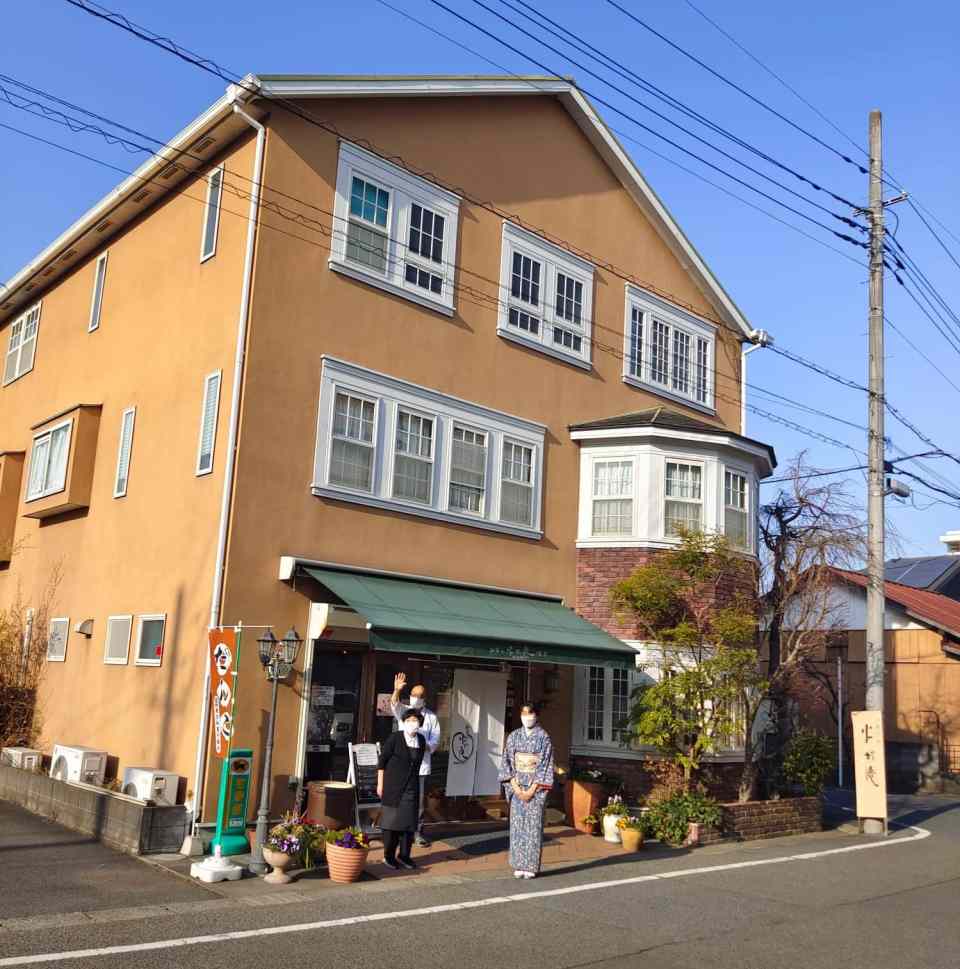
Hiuchi-An: Wagashi Sweets and Tea Ceremony
It’s always a joy to discover something new about Japanese food and culture. During my recent trip to Tokyo with Ms Etsuko Nakamura and her team from Sake Tours, I had the good fortune to learn about wagashi sweets and Japanese tea ceremony traditions.
Wagashi — A Treat for the Five Senses

Wagashi is a traditional Japanese confectionery that has been enjoyed for centuries. These soft, bite-sized delicacies are created with high-quality ingredients such as sweet bean paste, mochi, and rice flour. It can be savoured with a cup of tea or presented as a gift.

As with many other Japanese traditional food products, a wagashi’s concept, name, shape, and decoration often reflect its creator’s personal muses, the changing seasons, and cultural events. Wagashi is not only a delicious treat for one’s five senses but also an art form that requires skill and attention to detail.
Many recipes are passed down from generation to generation and in Japan, family businesses with decades or even centuries of history are the norm. Hiuchi-An, a wagashi shop and cafe, is one such example.
Hiuchi-An: Handcrafted Wagashi and Tea Ceremony Culture
Hiuchi-An’s current head, Mr Ichio Tsukamoto, joined the family business when he was younger, and his grandson, Mr Shotaro Sky Nance, has been supporting his grandfather with developing new wagashi concepts. We were pleasantly surprised to learn that Shotaro shares his ideas with his grandfather to mull over, and that wagashi has helped them bond closer.

Ichio-san used to paint before he took over Hiuchi-An and he continues his love for art using wagashi as his medium. During his wagashi workshop, he explained that wagashi can be enjoyed by our five senses:
- Sight: appreciating its colours, shape and beauty
- Smell: enjoying its aroma
- Taste: tasting the different flavours offered
- Touch: feeling the shape, texture and softness
- Hearing: listening to the sound of the wagashi’s name, which is full of meaning and history

Ichio-san engaged the participants by presenting a newly-created white and blue wagashi topped with silver flakes and asking us to share what we thought of when we looked at it. Most of us said that it reminded us of the sea, and Ichio-san revealed the inspiration behind the wagashi was The Great Wave by Edo period artist Katsushika Hokusai.
He subsequently shared a modern-looking wagashi that he created after listening to jazz music and asked us to give it a name, with the reason why we chose this name. It was through this exercise that he demonstrated why hearing was such an important sense when it comes to appreciating wagashi.
One participant remarked that deciding on a product’s name is the hardest thing to do. A name needs to have meaning, e.g. something that was involved in the creation of the product or to elicit a memory or feeling when one thinks of the name while consuming the product.
Overall, the whole experience gave me a sense of ichi-go ichi-e or a “once-in-a-lifetime encounter”. Ichio-san had probably run countless of such workshops in his career, and even so, he took the time to share his intimate thoughts about wagashi-making and ensured he heard each of our thoughts about his new creations. Each workshop was a new and unrepeatable experience; no other workshop before or after it would be exactly the same.
Wagashi and Tea
Hiuchi-An also held a tea ceremony to show participants how one can enjoy wagashi with tea. The traditional Japanese tea ceremony, also known as chanoyu or sado, is a ritualised way of preparing and serving matcha green tea with wagashi.

The host greeted us, the guests, and invited us into the tea room. The centre square of the tea room belonged to the host, and guests made sure to sit within the outer tatami mats.
We were served a piece of Hiuchi-An’s Satozakura, a sakura-shaped wagashi with red bean filling to eat and line our palate with the sweet wagashi taste. The host cleansed the utensils for the ceremony using a special cloth, and then prepared the tea by whisking matcha powder and hot water in a bowl with a bamboo whisk.

The host served the tea to each guest, one at a time, with the bowl rotated to present the best side of the design on the bowl, which was placed within the centre square in front of the guest. Each guest carried the bowl onto his mat, thanked the host for the tea, and turned to the next person to politely inform them that the former would drink the tea first.

While holding the bowl with both hands, the guest admired the design, turned the bowl about half a round, and drank the tea in three sips before using a finger to wipe off the top of the bowl where he drank. The bowl was then placed back into the centre square for the host’s assistant to clear. The host and guests then bowed and thanked each other to close the ceremony.
Appreciating Japanese culture with Hiuchi-An

I enjoyed browsing the sweets and traditional crockery, utensils and homeware at Hiuchi-An’s shop. Hiuchi-An also offers flower arrangement classes Ohara style and dressing classes. If you’re hungry, you can enjoy lunch, drinks and dessert together with wagashi and confectionery at its cafe.
Everything can be found within its charming standalone building painted a cheery yellow, with friendly staff who welcome you and introduce you to the best of Japanese wagashi and tea culture. If you’re in Tokyo, take a day trip to Ome to visit Hiuchi-An and many other interesting attractions.

Visit Hiuchi-An
Hiuchi-An is a Japanese sweets shop that offers classes for tea ceremonies, flower arrangements, and dressing. Guests can purchase sweets and traditional Japanese items in its shop and relax at its cafe.
Website: hiuchian.jp
Address: 2-12-6 Higashiome, Ome City, Tokyo 198-0042 (a 2-minute walk from the north exit of Higashi-Ome Station on the Ome Line)
About Sake Tours
Sake Tours takes you behind the scenes to meet the people who grow, cook, brew, and create the incomparable food, sake, and traditional arts and crafts of Japan.
Website: saketours.com
Special thanks to Mr Ichio Tsukamoto, Mr Shotaro Sky Nance, the Hiuchi-An team, Ms Etsuko Nakamura and the Sake Tours team.
Read more Japan-related content here.










